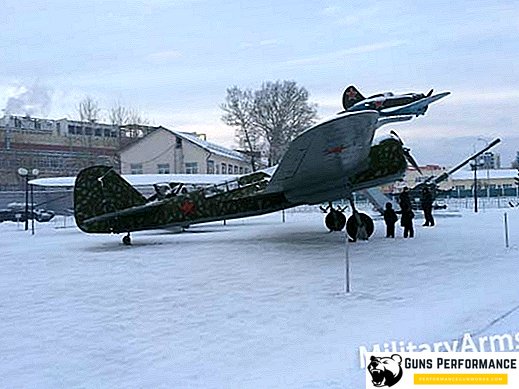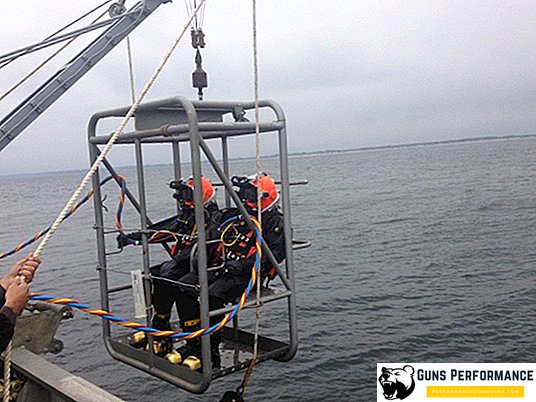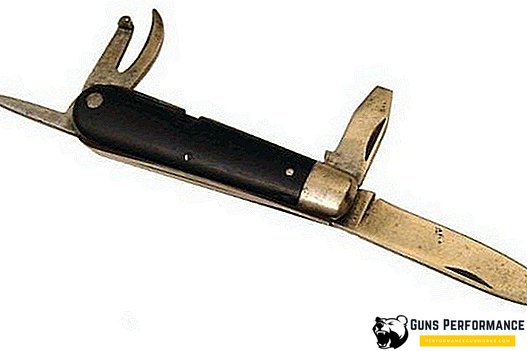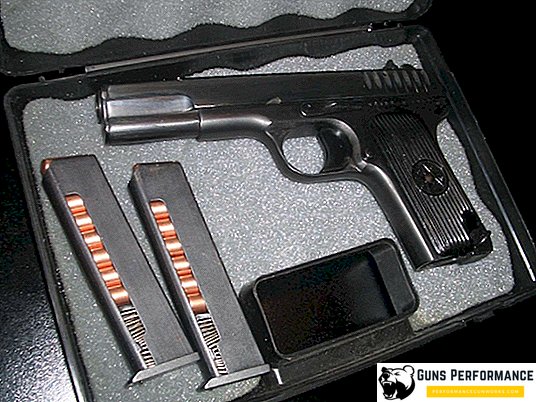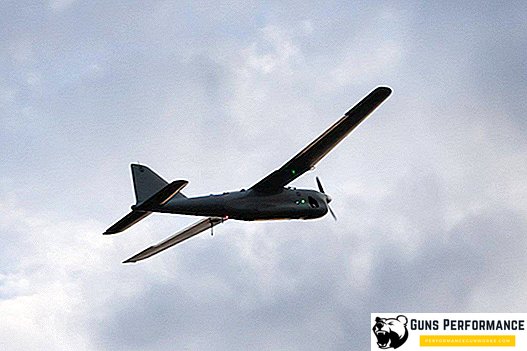
In recent years, during rallies and other public events, which are held by patriotic organizations, besides the traditional national flag, an unusual black-yellow-white tricolor can be seen more and more often. Often it depicts an old imperial symbol - a double-headed eagle, which first appeared in the XV century.
This is nothing more than the imperial flag, which was officially approved in 1858, after the heraldic reform in Russia. Its initiator was Emperor Alexander II. However, the history of the imperial flag of Russia begins long before this time.
It should be said that the origin and significance of this symbol has not been studied enough, comparatively little research has been devoted to it, and the facts that are set forth in popular editions have many inaccuracies. It is often argued how the colors on the imperial flag should be placed correctly, because until 1858 its appearance was somewhat different.
What does this flag mean? Why is it called "imperial"? What historical events are connected with it and why do Russian nationalists like the imperial flag so much?
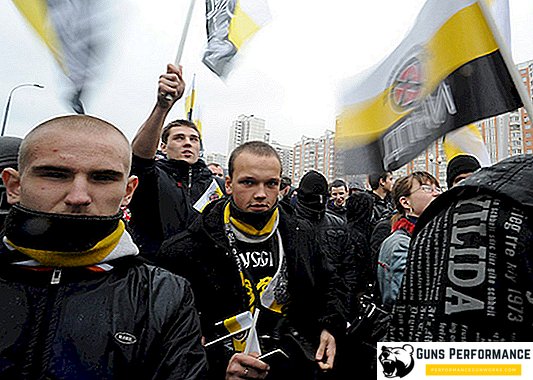
Often seeing the imperial flag at rallies of nationalists, ordinary citizens consider it almost Nazi, but this is far from being the case.
However, before talking about the history of the Russian imperial flag, it is necessary to give its exact description and explain the meaning of the colors and elements that were used in it.
Description of the Russian Imperial Flag
The Russian imperial flag consists of three horizontal stripes — black, yellow, and white. At the top there is a black stripe, below it is a yellow (or gold) strip, at the bottom of the cloth there is a strip of white (or silver) color.
The first interpretation of the image of the banner appeared immediately after its official approval - in the imperial decree of Alexander II of June 11, 1858. It is on June 24 (June 11, old style) that the current monarchists and representatives of nationalist movements celebrate the Day of the Imperial Flag.
According to him, the upper band of black color corresponded to the black double-headed eagle, the middle yellow (golden) color of the field on the state emblem, and the lower one (white or silver) corresponded to the Peter I and Katherine II cockade, and also coincided with the color of the rider (George the Victorious) on state emblem.
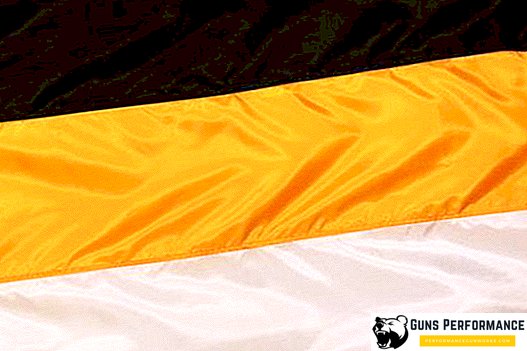
There are other interpretations of the meaning of certain colors on the imperial flag. Yellow or gold color is often associated with the golden double-headed eagle of Byzantium, which was depicted during the times of Kievan Rus.
White is traditionally associated with St. George the Victorious, one of the main heavenly fighters against evil. It is the color of purity and innocence, for all nations it symbolizes eternity and a bright beginning.
It should immediately be said that until 1858 the Russian imperial was somewhat different. He had a different arrangement of colors: there was a white stripe on top, a yellow one in the center, and the lower part of the banner was black. In addition, the decree of 1858 did not formulate the exact status of this flag. That is why different authors often call it somewhat allegorically: the Romanov flag, the flag of imperial colors, the flag of the Russian empire, and so on.
It should also be noted that the middle band of the imperial flag could have different variations: yellow or orange.
The history of the imperial flag of Russia
Russia was obliged to accept the national flag to Peter I, although the first appearance of the traditional white-blue-red tricolor happened even during the reign of Alexei Mikhailovich. Then for the manufacture of the flag of the warship "Eagle" was ordered red, blue and white fabric. In addition to the usual tricolor, Peter I also used the imperial standard, which was made in the colors of the imperial coat of arms.
The first appearance of the black, yellow and white Russian flag dates back to the beginning of the 18th century. During the reign of Empress Anna Ioanovna, a Senate decree was issued, according to which the scarves of infantry and dragoon regiments should repeat the colors of the Russian coat of arms, that is, be black and gold. The same applied to headgear: soldiers were required to wear hats with a gold lace, tassels, white bow and black field.

A little later, the state flag was made for the coronation ceremony of Empress Elizaveta Petrovna, which was later used in various ceremonial events. It was designed as a yellow cloth with a black double-headed eagle centered on both sides. The emblems of the principalities and lands belonging to the Russian Empire were depicted around the edges of the cloth.
The combination of black, yellow and white flowers became very popular during the Russian-French wars of the early 19th century. During the Patriotic War of 1812 it became fashionable to decorate clothes and homes with ribbons, flags, cockades, made in these colors.
Under Emperor Nicholas I, cockades and ribbons of the colors of the imperial flag are beginning to be used quite widely by civilians (primarily officials), previously they were mainly distributed among army and navy officers.
Officially, the imperial flag was approved during the reign of Emperor Alexander II. He initiated a large-scale heraldic reform, during which changes were made to the small state emblem, the medium and large emblem of Russia were approved. The reform was led by Bernhard Kene.
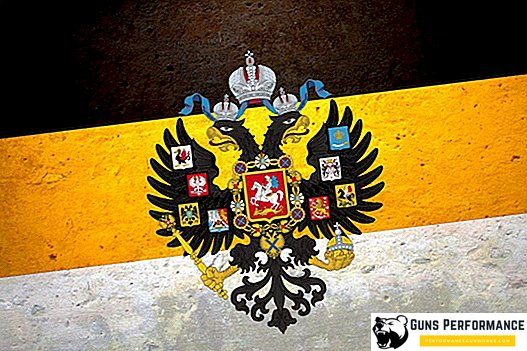
The flag was approved in June 1858, but its status remained unclear. In the Russian state almost two flags appeared: white-blue-red and black-yellow-white. In 1864, Alexander II signed another decree in which the combination of white, yellow and black was called the colors of the national Russian cockade. Some researchers believe that in fact, in Russia, there was a change of the national flag.
It should be noted that before 1858 the order of alternation of strips of the imperial flag was somewhat different: the white stripe was on top, and the black stripe - from below. There is also an explanation for this arrangement of colors, it was supposed to symbolize the main motto of the Russian state: "Orthodoxy, Autocracy, Narodnost". The upper band is the Church, the white color symbolizes its holiness and purity. The middle yellow band signifies the fame and valor of the sovereign (gold is the royal color), and the lower, black signifies the Russian people, which is the basis of both autocracy and Orthodoxy.

There is another interpretation of the original arrangement of colors on the imperial flag. The bottom layer (black color) symbolizes the sovereign emblem of the empire - the two-headed black eagle. This is the personification of the stability and prosperity of a huge country, the inviolability of its borders and the unity of the nation. The middle layer (yellow or gold) is a symbol of moral development, of the spirituality of the Russian people. This color is also interpreted as a continuity of the traditions of the Byzantine Empire - above all, the Orthodox faith. The upper band (white) refers to St. George the Victorious, whom he has been especially honored in Russia for many centuries and is considered the defender of the Russian lands. In addition, white is a symbol of sacrifice. The Russian people are ready to make great sacrifices in order to preserve the greatness of their country and their own honor.
Why the flag was turned upside down - still remains a mystery. An inverted flag is a sign of mourning, and is generally considered an extremely bad omen. In the fleet, an inverted flag on the mast of a ship signifies a disaster that he suffers. This sign was well known in Russia. Ken, who devoted his life to heraldry, could not know about it. It should be noted that after the approval of such a flag, the life of the empire began to change in a bad direction.
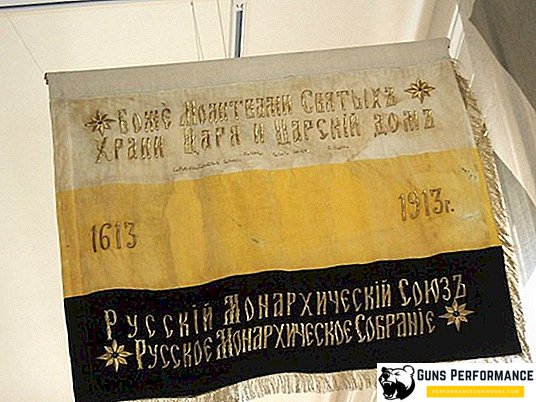
For nearly 25 years, the imperial flag was used as an official, based on its colors, new territorial emblems were developed (this is a normal practice in heraldry). The imperial flag was hung over state institutions, state buildings on holidays, and ordinary citizens could use the old white-blue-red flag, which was originally used in the merchant navy.
This continued until the most tragic death of Alexander II. But his son, Emperor Alexander III, changed the situation. Already before the coronation of Alexander III, a decree was issued on what kind of flags to decorate at home during festive events. It was prescribed to use only the white-blue-red flag.
Thus, Alexander III practically revived the white-blue-red tricolor, and later (in 1883) gave him the status of a state. However, he did not cancel the imperial flag, which led to some confusion. If to speak legally, then in Russia during this period two national flags appeared. It should be noted that the imperial flag continued to be used, although much less frequently than under the previous emperor. Especially often it was hung out during various celebrations related to members of the ruling dynasty.
For example, the imperial flag was raised during a meeting of Alexander III with the Austrian emperor in 1885.
It must be said that around the 70s of the XIX century the question of the national flag began to provoke heated debates in Russian society. At that time, a stratum of liberal-minded citizens had already appeared in Russia who advocated for the white-blue-red flag as a state flag, as well as defenders of autocracy and conservative values defending the imperial flag. The white-blue-red flag to some extent became the banner of opposition to the tsarist government at that time.
Such confusion could not but lead to curious situations: in 1892, during the preparation for the coronation of Nicholas II, the police of the city of Kharkov ordered to remove the imperial flags from all the buildings. This case became widely known and caused a great resonance in Russian society.
On the eve of the coronation of Nicholas II, a special meeting was held at which the question of the national flag was discussed. It was decided to consider the Russian state flag white-blue-red.
Arguments were given rather peculiar. Officials said that it was these colors most of all to the people of the empire: the festive folk shirts of the peasants were white, blue or red, the women's festive sundress was also red or blue, and in general has long been called beautiful "red" in Russia.
It is clear that such arguments when choosing a national symbol look a bit strange.
Be that as it may, the new (and last) Emperor Nicholas II put an end to the question of the national flag. Even before the coronation, having familiarized himself with the conclusions of the commission, he ordered to consider the white-blue-red flag to be the state flag. Although this decision was not made public for more than two years.
During the reign of Nicholas II, the imperial flag was used quite often, but the white and blue and red flag was considered the official and official one.
The imperial flag continued to be used at official ceremonies; it was included in the standards of the members of the imperial family. The imperial flag was especially actively used during the celebrations of the 300th anniversary of the Romanov dynasty. The anniversary medal with the ribbon of the colors of the imperial flag was made for this date.
In 1910, several monarchist organizations again raised the issue of the return of the imperial flag as a state flag. It was proposed to change the location of its colors. The reason for the appeal was the approach of the holiday - the 300th anniversary of the Romanov dynasty.
On this occasion, a special meeting was created, which examined the question of which of the flags is more suitable for the role of the state. The Minister of Justice Verevkin supervised his work. Surveys lasted several years, its outcome was the decision to return as the state of the old imperial flag. At the same time, scientists could not find a valid justification for any of the flags.

The government made a compromise: in 1914, a new version of the national flag was proposed: a white-blue-red panel, with a black eagle in a yellow square, which was located in the upper corner, near the hoist. Then the First World War began - not the best time to replace the main state symbol.
Russian imperial flag after the revolution
The February and October Revolution of 1917 put an end to the official use of the imperial flag.
As a symbol, it was used by various White Guard and monarchical organizations that are in immigration. One of the most famous is the "Russian Fascist Party", which existed before the Second World War.
The renaissance of the imperial flag began in the late 1980s, just before the collapse of the Soviet Union. In 1990, a commission was created, which was engaged in the development of projects of the coat of arms and flag of the Russian Federation. The idea to revive the old white-blue-red flag was adopted unanimously.
The imperial flag has become a symbol of right-wing and monarchical organizations and is still very popular among Russian nationalists, from moderate to far-right. Since then, calls for the imperial flag of official status have been periodically heard. He was repeatedly offered to make the state.
In the early 90s, several Cossack organizations at once chose the imperial flag as the main symbol. Football fans are not indifferent to this banner. An imperial flag with the emblem of Russia is often encountered as a symbol. None of the "Russian March" or a similar event does not do without imperial symbolism.
The imperial flag is even used by neo-pagans (Rodnovers), who place a kolovrat or thunderhound, an ancient pagan Slavic symbol, in the center of the cloth. However, how to connect the flag, which officially appeared in the middle of the XIX century, and the beliefs of the ancient Slavs - this is a big mystery.
In 1993, during the coup, the imperial flag was actively used by defenders of the Supreme Soviet. Although, I must say that there were much more red flags.
In 2014, the Legislative Assembly of St. Petersburg appealed to the State Duma with a proposal to grant special status to the imperial flag. According to the deputies, it must be recognized as a historical symbol of Russia.
There were attempts to use the imperial flag or its colors in the symbolism of the so-called Novorossia - the separatist entity in the east of Ukraine. Even after the apparent collapse of the Novorossia project, imperial colors continue to be used in the unrecognized republics of Donbass.
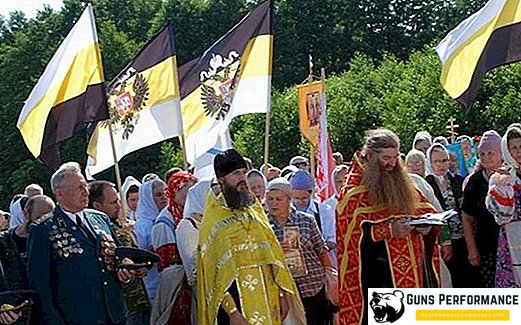
Currently, the debate continues regarding the approval of the imperial flag as a state flag, but its intensity is gradually eroding. Tricolor has long been a familiar and recognizable attribute of the Russian state.
Defenders of the state status of the imperial flag state that the period of its use (from 1858 to 1883) was the epoch of the maximum flourishing of the Russian Empire. During this time, not a single war was lost, Russia finally conquered the Caucasus, won the war in the Balkans, and significantly expanded its territory.
The imperial flag was not used by the collaborators during the Great Patriotic War, and the Hitlerite allies (POA, RONA) fought under the current tricolor. This is another reason for recognizing the imperial flag. However, frankly fascist organizations that used the imperial Russian flag, fought against the USSR in the prewar period.
Among the opponents of the recognition of imperial symbols at the state level, most of all are communists and representatives of other left-wing organizations. They indicate that the color scheme of the imperial banner is copied from the flags of Prussia and Austria and has no relation to the Slavs at all.
Despite the fact that the imperial flag is loved by representatives of right-wing movements, it is not included in the list of extremist symbols.



